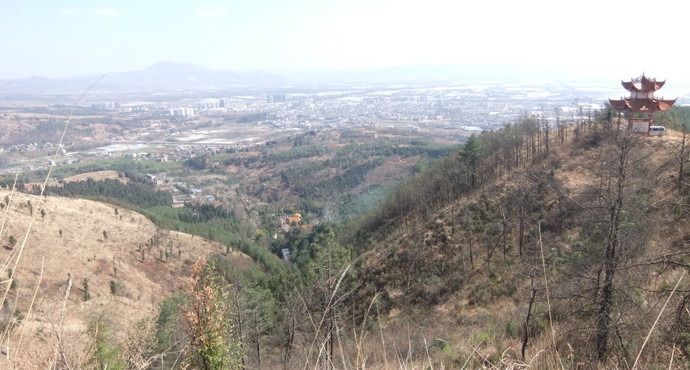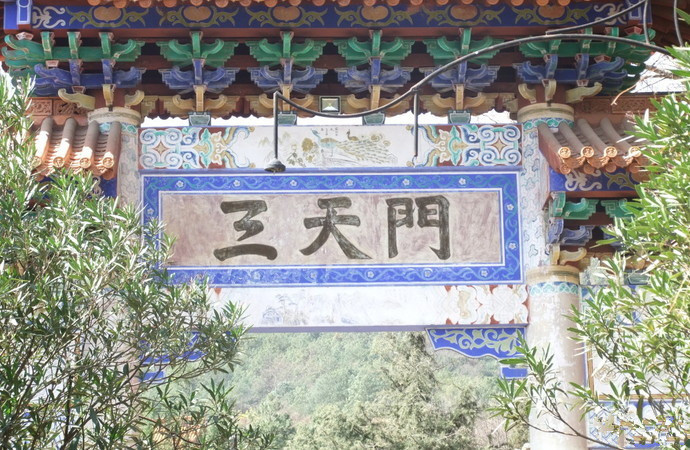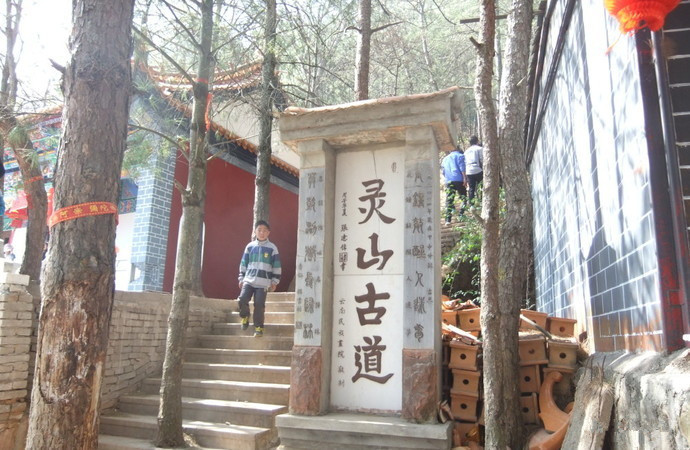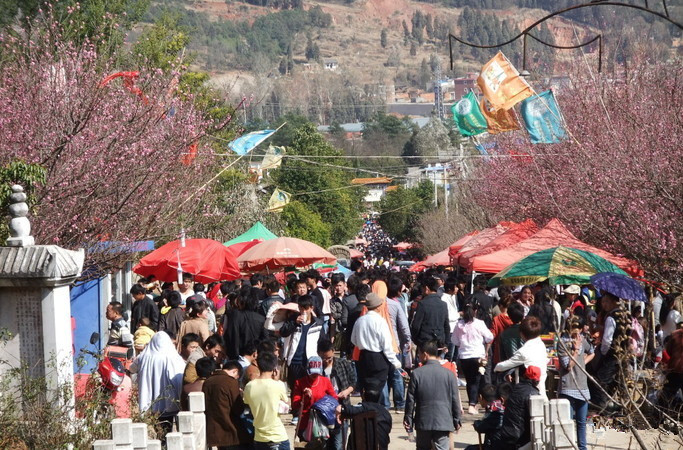Fajiesi Forest Park in Songming County, Kunming
Fajiesi Temple (法界寺), located at the foothills of Lingyun Mountain (灵云山) in Songyang Town (嵩阳镇), is a county-level cultural heritage site. Its exact founding date is unknown, but historical records indicate that it underwent repairs during the Ming Dynasty (明代) under the Chenghua reign (成化年间). By the late Ming Dynasty (明末), during the Chongzhen period (崇祯), the temple had developed into a large architectural complex featuring overlapping halls, altars, pavilions, and structures representing both Buddhism and Daoism, making it the most significant temple among the Eight Great Temples of Songming (嵩明八大寺). The Ming geographer Xu Xiake (徐霞客) documented Fajiesi Temple in his writings.
Historical Background
Originally built between 936 and 947 AD, Fajiesi Temple became a renowned Buddhist holy site. However, from the Republic of China era to the 1960s, it suffered extensive destruction. In 1989, devotees raised funds to rebuild the Guanyin Hall (观音殿). By 1997, during the development of Fajiesi Forest Park (法界寺森林公园), the Daxiongbaodian (大雄宝殿) and side halls were reconstructed, followed by the construction of the Tianwang Hall (天王殿), Caishen Hall (财神殿), Wenchang Palace (文昌宫), and Longwang Hall (龙王殿), all built in ancient-style reinforced concrete. Existing inscriptions from the Ming Dynasty include the “Stele of the Renovation of Fajiesi Temple” (重修法界寺设龙华会碑记) and the “Stele of the Monastery” (丛林碑记), while a Qing Dynasty (清代) inscription from the Daoguang era (道光年间) commemorates the renovation of Zhenjue Temple (真觉寺). On July 5, 1999, the People’s Government of Songming County officially designated Fajiesi Temple as a county-level cultural heritage site.
Architectural Features
Fajiesi Temple comprises three gates: the First Gate (一天门), the Second Gate (二天门), and the Third Gate (三天门). Upon passing through the Third Gate, visitors enter the temple area, where numerous halls and shrines, including the Daxiongbaodian, Dizang Hall (地藏菩萨殿), Yuelao Temple (月老神庙), Sanqing Temple (三清观), Yaowang Temple (药王庙), and Guanyin Hall, are situated. The temple features various statues, such as the compassionate Bodhisattva, the formidable Four Heavenly Kings, robust warriors, and smiling Maitreya Buddha (弥勒佛).
Inside the Daxiongbaodian, three majestic figures of the Tathagata Buddha (如来佛) are prominently displayed. Behind the Tathagata is the Thousand-Hand Guanyin (千手观音), depicted with hundreds of hands and numerous expressions, truly embodying her title. The surrounding walls feature vividly expressive statues of the Five Hundred Arhats (罗汉), each with unique appearances, including the long-legged Strength Arhat and the Dragon Subduing Arhat, among others. Visitors often admire these intricate sculptures.
Particularly notable is the Dizang Wang Bodhisattva Hall (地藏王菩萨殿), which, while appearing similar to others, holds profound significance. According to legend, Dizang Wang could have become a Buddha but chose to remain in the mortal realm, famously declaring, “I vow not to become a Buddha until hell is empty!” (人间地狱不空,我誓不成佛!). This sense of justice resonates deeply with many.
Seasonal Beauty
In autumn, entering Fajiesi Park (法界寺公园) reveals a picturesque scene. Songming is known for its saying, “Three mountains, four seas, and eight great temples,” suggesting a harmony of natural beauty and spirituality. Fajiesi Forest Park is located 2.5 kilometers northwest of Songming County, once a well-known Buddhist sacred site, with Fajiesi Temple built during the Later Jin period (后晋年间). At its peak, the temple complex included over ten halls, creating a grand architectural ensemble that ranked first among the Eight Great Temples of Songming.
Poetic Tribute
Located on Lingyun Mountain, shaped like a half-bloomed lotus flower, Fajiesi Temple is often celebrated for its natural beauty. The temple is surrounded by bamboo forests, creating a serene atmosphere. The ancient path leading up the mountain is reminiscent of a dragon or serpent, winding through lush pine trees. Visitors frequently pray for love at the Yuelao Shrine, attaching love locks as symbols of their promises.
A couplet commemorating the temple’s grandeur reads:
Upper Line:
“Silent twin springs cascade down, beautiful landscapes unfold.
At the valley’s base, the Zen temple is deep; envisioning wealth piled high in all directions, with gentle rains nourishing all.”
Lower Line:
“Ancient paths meander like a snake, steps undulating and winding.
At the mountain’s base, the winding path feels fresh; gazing at the mountain reflecting the sun and moon, prosperity continues in Songming, and all trades flourish.”
Note:
The “silent twin springs” refers to the now-dry Black Dragon Pool (黑龙潭), which no longer features the scenic waterfalls of the past. The phrases in the couplet celebrate the beauty of Songming and its prosperous future, highlighting the community’s harmonious development.




















